STUDENTS PROJECTS
PROJECTS2013
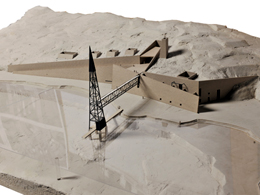
01 June, 2014
Museum of underwater antiquities in Chios
The subject of this diploma project concerns the creation of a museum of underwater antiquities on Chios island, in Greece , that will include both exhibition and research areas, as well as a small diving center.
Students: Artemis Pefani, Theodoros Poulakos
Supervisors: T. Papaioannou
National Technical University of Athens: School of Architectural Engineering
Submission date: 13th of March 2013
The underwater archaeological research deals with the study and excavation of sunk building remains and shipwrecks. Its importance lies in the fact that the underwater archaeological finds are often better preserved than terrestrial findings, because of their stay in a humid environment and their protection from human interference.
Pursuant to the concept of a monument's protection in situ, which is institutionalized in the Article 7 of Chart of Venice in 1964, we suggest that underwater findings stay at the bottom of the sea -with the exception of a sampling hauling for archaeological study- and encourage the creation of an underwater archaeological park. Therefore, visitors can dive and marvel the discoveries at the site where they were found and maintained so far, accompanied by a guide.
The sea area around Chios presents an abundance of sites of marine archaeological interest, because of the island's maritime tradition and due to its geographical position, at the crossroads of maritime trade routes of antiquity. Thus, the creation of a museum of underwater antiquities can keep underwater findings in their place and reinforce the naval character of the island.
THE SITE OF INTEREST
The studied area is located in Tholos, a natural protected bay, without residential presence, 12.3 kilometers north of Chios' town. Since ancient times, its maritime area was used as anchorage, while the presence of an old careenage provokes memory of the naval activity in the area.
Gradually, the traditional shipyard has limited its activities and, in the current situation, an unofficial boat parking, operating in combination with repairs, and an illegal fish pond have occupied the area of the bay, significantly degrading the landscape. The necessity for more space has led users to dig a part of the mountain, along the coastline, and drop the soil into the sea, to establish a wider flat coastal zone. Consequently, the deterioration of the landscape in the existing condition is pronounced, while both the rock and the shoreline have suffered a violent intervention.
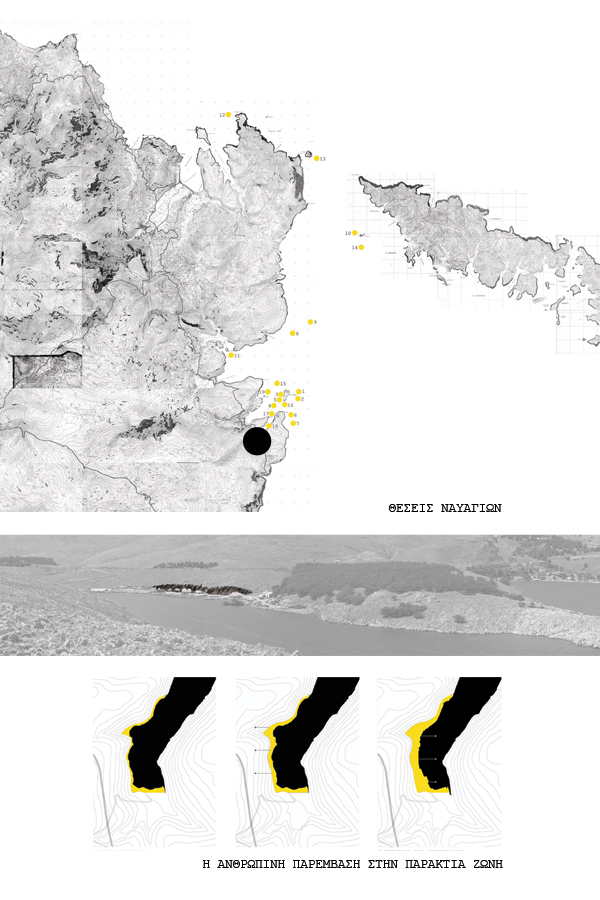
LANDSCAPE RESTORATION
Shoreline_
The aim of our intervention is the restoration of the existing landscape. Our first priority is to remove the upper layer of the additional soil from the coastal zone, in order to restore the pre-existing natural shoreline. The low depth water zone that occurs serves as a place for providing first aid treatement to the findings retrieved from the bottom and as an exhibition site for contemporary art. The configuration of the area is completed with three large stairs that will allow visitors to admire the sea on the threshold shoreline.
Rock_
The development of a building - background on the heavily affected front of the mountain and the placement of a vertical element to the sea, as a reference point of the center and as an indication of its relationship with the sea, are forming the main concept.
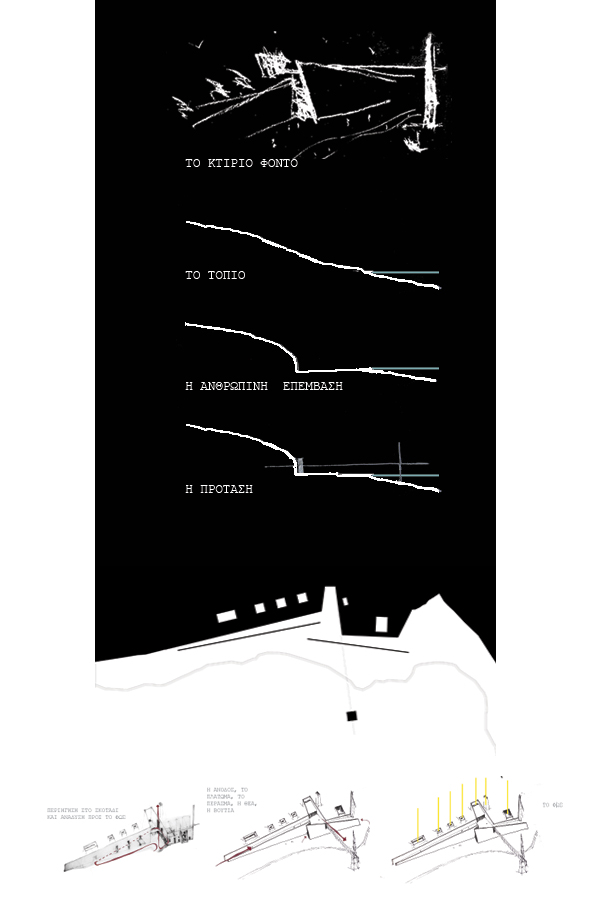
THE PLAN
In terms of plan, a retaining wall defines and forms the ending of the rock, and both describes and highlights the lines of the landscape. A recess in the wall creates a vertical axis that will associate and connect the mountain with the sea. This axis is depicted as a metal bridge and links the building-mountain with the vertical metal construction in the sea. Also, it divides functionally the building in the museum and the laboratories. The stucture in the sea is the diving center and it is elevated to indicate the presence of the museum from land and sea.
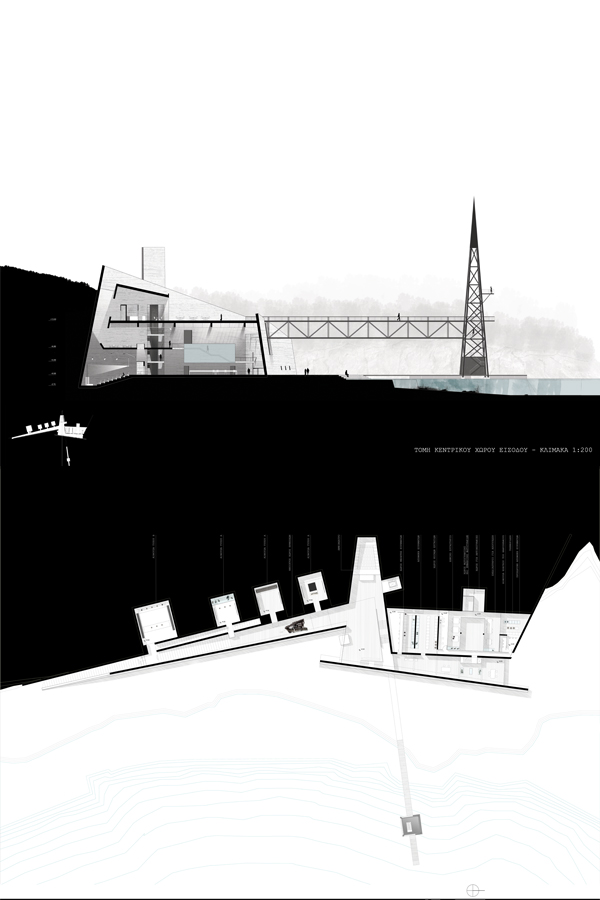
THE SECTION
In terms of section, the retaining wall follows again the line of the landscape. It begins near the ground, rises and then decreases again. This movement of the wall suggests an alternative outdoor path over the building, the bridge and the tower of the diving center. In the foreground, two additional walls are placed to form the facade-background of the building. It seems like a single wall split in two in order to reveal the entrance.
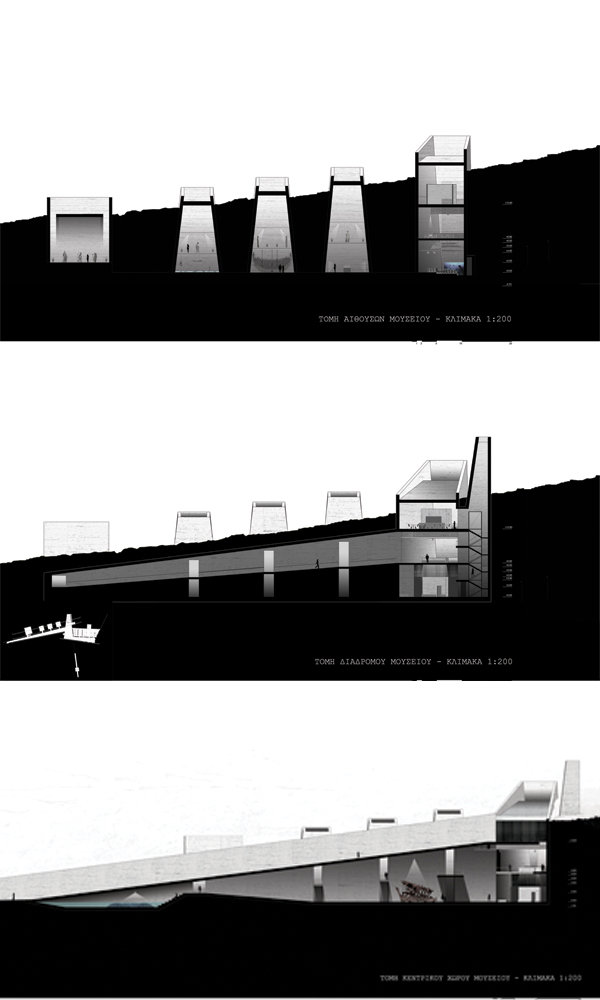
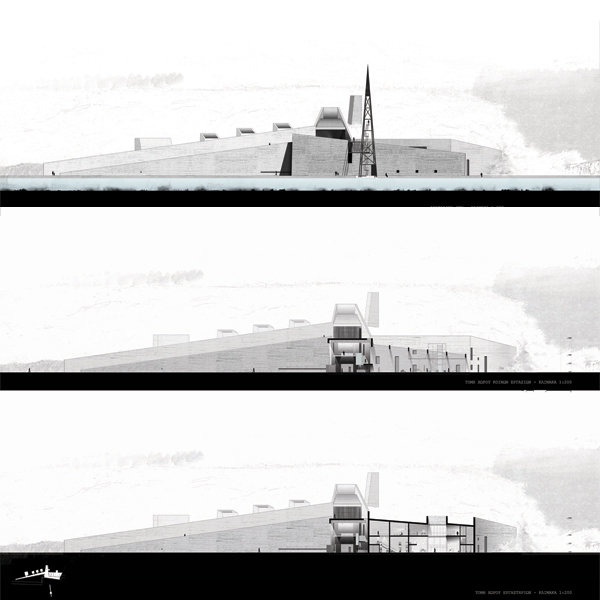
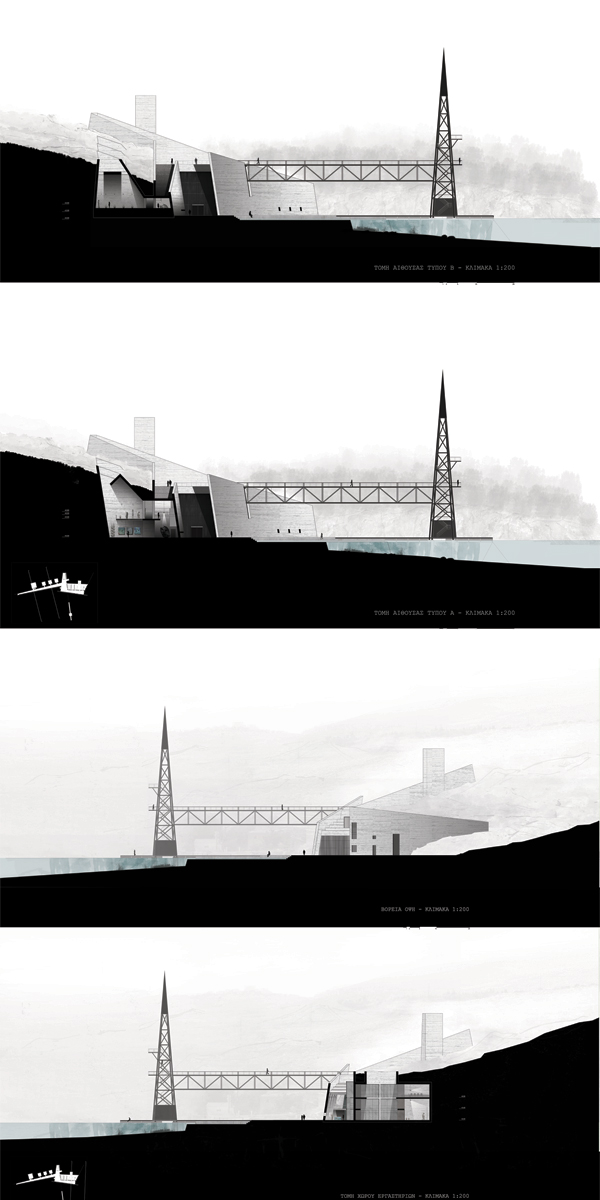
THE LIGHT
Inside the building a path leads to gradual emergence, from darkness and cave areas to the light and the ceiling of the museum. The light inside comes generally from the top, resembling the atmosphere of the bottom, and directs the visitor sequentially from one space to the next.
THE ACCESS
The access from the upper street level reveals to the visitor the fifth facade of the building and the form of cave areas. At sea level, the natural limit of the mountain which continues with the building- background, turns the visitor's gaze to the sea and provides an outdoor promenade near the water as well as a perception of the landscape without any external interruption.

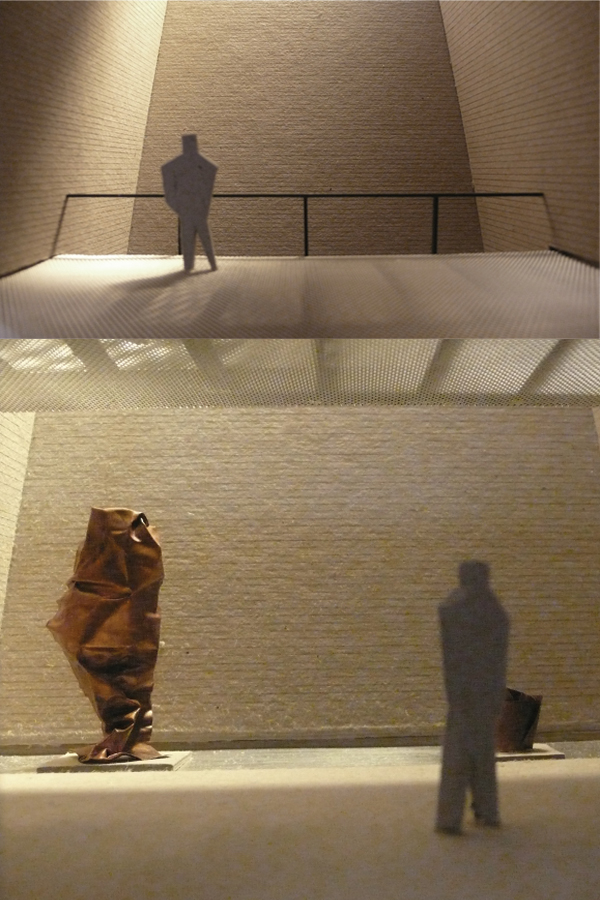
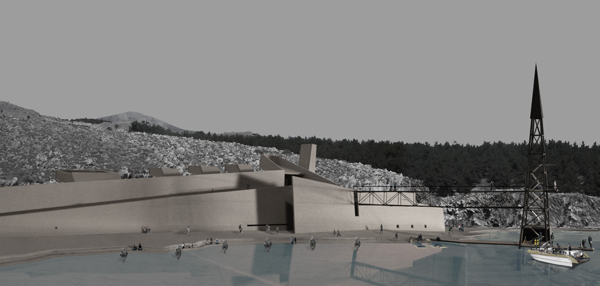
Related articles:
- DESTROY below the ACROPOLIS - VIDEO ( 13 November, 2007 )
- Architectural cannibalism in Athens ( 23 July, 2009 )
- The Acropolis Museum: An Unhappy Fit ( 08 June, 2010 )
- The New Acropolis Museum: A Triumph of Sophistry ( 21 September, 2009 )
- Αrchitectural competition ( 13 March, 2009 )
- D. Areopagitou 2008: reformation competition of the rear views of historic buildings towards the new Acropolis Museum ( 25 July, 2011 )
- New Acropolis museum ( 06 January, 2013 )
- All about fish ( 14 February, 2013 )
- New Acropolis Museum (NAM) ( 07 October, 2013 )
- The archaeological museum of Ancient Messene and the architectural configurations of the archaeological site ( 08 January, 2014 )
- Redefining Leftovers ( 05 April, 2014 )
- Theatre complex at Koukaki, Athens ( 20 January, 2014 )
- Reformation and rehabilitation of an inactive quarry, with spatial location of uses for Tourism, Recreation and Environmental Education ( 10 February, 2014 )
- Cultural center of Glyfada ( 23 February, 2014 )
- Environmental Center and Cultural Center in Kaiafa’s Lake ( 21 March, 2014 )
- The rack railway museum at Vouraikos gorge ( 18 April, 2014 )
- Archaeological museum in Astypalaia ( 03 November, 2014 )
- Art multiplex in the Customs Office area in Palaia, Volos ( 24 February, 2015 )
- Diploma projects exhibition museum of school of architecture ( 02 March, 2015 )
- Lighthouse Museum in Andros ( 20 April, 2015 )
- Archaeological Museum for the Neighbourhood of Plato’s Academy ( 15 April, 2015 )
- Palazzo di Lorenzo’s Museum in Sicily ( 15 May, 2015 )
- New Archaeological Museum of Delos ( 19 July, 2015 )
- Archaeological Museum of Eleftherna ( 01 September, 2015 )










